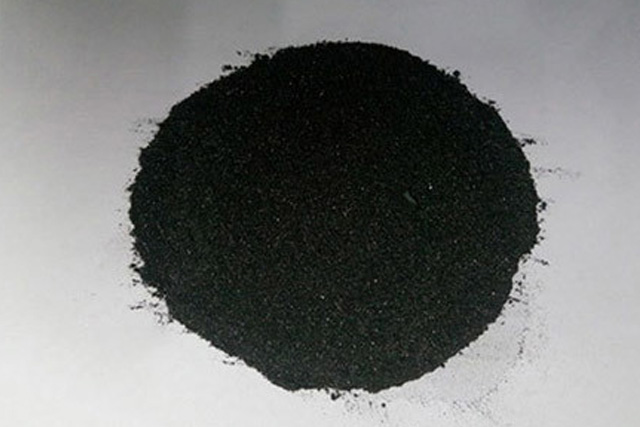Synthetic Graphite Powder & Granuels

Synthetic graphite is produced through a complex process of baking petroleum coke at very high temperatures. Synthetic graphite can have a purity of over 99% carbon, and it is used in manufactured products where extremely pure material is required.

Note: Various Mesh Sizes available and can be supplied as per customers demand and requirement.
Application of Graphite:
Refractories
Before 1900, the use started with the graphite crucible to carry molten metal but now it is a small part of refractories. The carbon-magnesite brick became important in the mid-1980s, and the alumina-graphite form became a little later. The order of importance at the moment is the shapes of alumina-graphite, carbon-magnesite bricks, monolithics and then crustaceans.
Batteries
In the last 30 years, the use of graphite in batteries has increased. The anode of all major battery technologies is constructed using natural and synthetic graphite. Approximately twice as much graphite as lithium carbonate is used by the lithium -ion battery.
Steelmaking
For this purpose, natural graphite is mostly used to raise carbon in molten steel, although it may be used to lubricate the dies used to extrude hot steel. The supply of carbon pickers is highly competitive and therefore subject to reduced prices from alternatives such as synthetic graphite powder, petroleum coke and other forms of carbon. To raise the carbon content of the steel to the specified level, a carbon raiser is added.
Brake Linings
For heavier (non-automotive) vehicles, natural amorphous and fine flake graphite is used in brake linings or brake shoes and has become important with the need to replace asbestos. This use has been important for a long time, but organic non-asbestos (NAO) compositions are starting to reduce the market share of graphite. There was no benefit in a brake-lining industry shake-out with some plant closures, nor was there an indifferent automotive market.
Foundry Facings and Lubricants
A mold wash foundry is an amorphous or fine flake graphite paint based on water. Painting the inside of a mold with it and letting it dry leaves a fine graphite coat that will make it easier to separate the cast object after cooling the hot metal. Graphite lubricants are special items that can be used at very high or very low temperatures, such as die-lubricant forging, an antiseize agent, a mining machine gear lubricant, and locks lubricating. It is highly desirable to have low graphite, or even better no - grit graphite (ultra-high purity). It can be used in water or oil as a dry powder or as colloidal graphite (a permanent suspension in a liquid).
Pencils
Pencils have been made from English natural graphite leads since the 16th century, but modern pencil lead is most commonly a mixture of powdered graphite and clay; it was invented by Nicolas-Jacques Conté in 1795. It is chemically unrelated to the metal lead, the ores of which looked similar, hence the name's continuation. Plumbago is another older term used for drawing natural graphite, typically as a mineral lump without a wood case. The term drawing of plumbago is usually limited to works of the 17th and 18th centuries, mostly portraits. Pencils are still a small but important natural graphite market today.
Graphene Technology
Single graphene roller sheets are 10 times lighter than steel, as well as 100 times stronger. Such a rolling sheet is also known as graphene, and this graphite derivative is the strongest identified material in the world and has been used to produce super-strength, lightweight sports equipment. Graphene shows resistance to chemicals, has high electrical conductivity and low light absorption.
Crystalline Structure
Graphite occurs naturally in rock fractures or as amorphous lumps as flakes and veins. A flat sheet of strongly bonded carbon atoms in hexagonal cells is the basic crystalline structure of graphite. These sheets are called graphenes, but the vertical bonds between the sheets are very weak. The weakness of these vertical bonds allows the sheets to slide over each other and to cleave. However, the resulting material is 100 times stronger than steel if a graphene sheet is aligned and rolled horizontally.
Other Uses
In zinc-carbon batteries, in electric motor brushes, and in various specialized applications, natural graphite has found uses. Different hardness or softness graphite results in different qualities and tones when used as an art medium. The Railway mix graphite with waste oil or linseed oil to create a heat-resistant protective cover for a steam locomotive's exposed portions of the boiler, such as the smokebox or the lower part of the firebox.
Summary:
- Crucibles, foundries, pencils, etc. are the traditional uses of graphite. More sophisticated graphite applications include refractories used in steel, cement, and glass manufacturing, expanded graphite-based sealing gaskets, graphite grease, braid, brushes, brake lining, etc.
- It is also used in special applications such as in the nuclear industry, soil conditioners, and graphite foils used for sealing in the chemical and petrochemical industries and in the energy, engineering, and automotive industries.
- It is also used as a vital additive in small amounts to produce foundry coatings to prevent the melting of liquid metal with sand on the mould or core face. Such coatings are either sprayed or painted as a suspension or dusting or rubbed as dry powders.
- The graphite used for coating is of high quality that does not peel off as drying flakes and gives the casting a smooth surface. A major additive in many coating systems, graphite is known for its multiple functions such as refractory, lubricant, thermal conductor, electrical conductor, shield, electromagnetic pulse shield, corrosion shield, and pigment.
- It is also used in nuclear reactors and Lithium-ion (Li-ion) batteries used in electric vehicles that require high purity flake graphite in their anode material as a moderator

